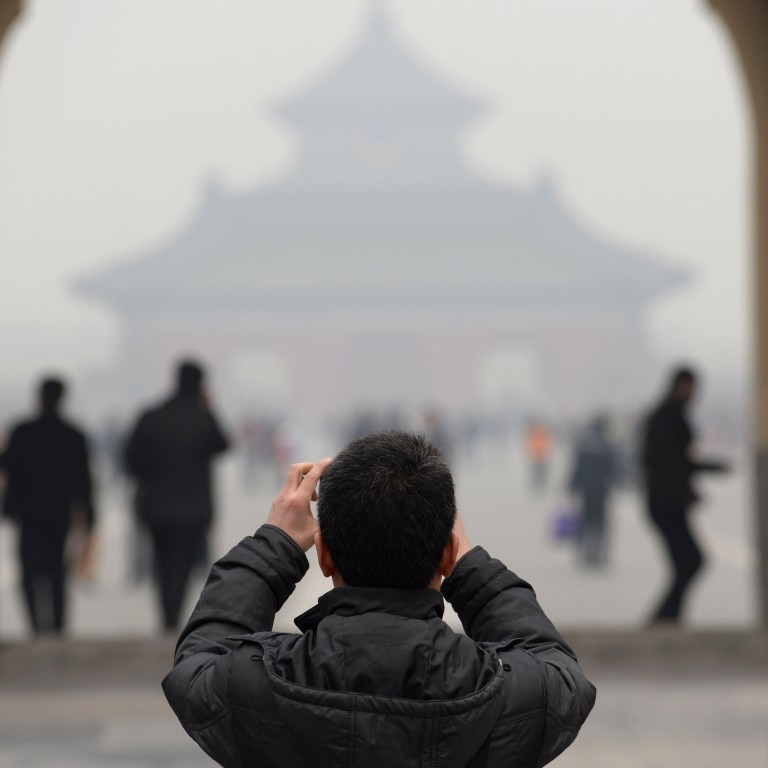
New | Northern China may get reprieve from smog as cold front approaches
Gust of cold air brings rain and wind that may dissipate the haze that has choked parts of the mainland
The heavy smog that has blanketed Beijing for more than a year may finally ease on Wednesday evening, when a strong cold front was expected to sweep across northern China, the National Meteorological Centre said.
The centre said in a statement that the cold air had arrived in the Inner Mongolia Autonomous Region early on Wednesday, and was expected to bring winds and rains to northern China, dispersing the persistent smog.
The cold front will reduce temperatures by up to 14 degrees Celsius, the statement said. In some areas, this cold snap, at its worst, could mean temperatures would drop further below zero
Up to 15 per cent of the country had been blanketed by hazardous-level pollution over the past week, with more than 19 cities recording PM2.5 levels (a measure of fine particulates) far exceeding the World Health Organisation’s threshold of 25 micrograms per cubic metre.
The PM2.5 reading at the US Embassy in Beijing reached 551 micrograms per cubic metre at 12pm, meaning pollution has reached a level where people may experience more serious health effects.
The Beijing government’s air quality index, calculated based on the concentration of various pollutants, also reached more than 500 in several districts.
The Ministry of Environmental Protection earlier said they would send 12 teams of inspectors to audit how local authorities were responding to severe smog, amid growing public outcry over a failure to tackle the problem.
The inspections will cover Beijing, Tianjing and nearby cities in Hebei province, and will focus on heavy-polluting industries such as steelmaking.
The meteorological centre has issued 12 alerts for the smoggy weather since February 20. Among them, nine are yellow alerts (the third-highest on the scale, which means people must stay indoors) and three are orange (the second-highest on the four-colour scale which requires a halt to construction, barbecues and fireworks).
But Beijing is under public pressure to issue the highest alert – red – which calls for measures such as closing schools to minimise the smog’s impact on public health.
A government guideline said a red alert should be issued if forecasts indicate that the air quality index will exceed 300 for three days.
A secondary school affiliated to Peking University had suspended junior secondary classes because of the smog.
Officials ordered the school to resume classes on Wednesday, saying education authorities only asked schools to suspend outdoor activities, reported.
But a school notice said the junior classes would still be suspended, and students would use online learning platforms instead, China National Radio reported.
“Nanjing suspended schools for four days late last year,” said a mainland online user on his Sina Weibo account. “This heavy smog has been going on for seven days in Beijing, and we still want our kids to go to school. This is beyond understanding.”

